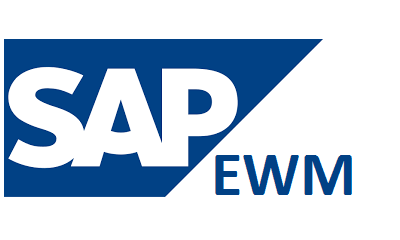Top 10 Best Warehouse Management Systems (WMS) in India 2024

In the fast-paced landscape of modern business, efficient management of warehouse operations has become pivotal for maintaining a competitive edge. As we step into 2024, the significance of robust Warehouse Management Systems (WMS) has never been clearer. These systems are the linchpin of seamless inventory control, streamlined logistics, and optimized resource utilization, enabling organizations to navigate the complexities of supply chain management with finesse.
The year 2024 arrives with a new set of challenges and opportunities, demanding a closer look at the most advanced and reliable Warehouse Management Systems available. This comprehensive guide unveils the “Top 10 Best Warehouse Management Systems (WMS) in 2024,” offering valuable insights into the leading solutions that stand ready to revolutionize the way businesses handle warehousing and distribution.
In an era where consumer expectations are continually evolving, businesses must adapt to heightened demands for speed, accuracy, and visibility across the supply chain. A well-implemented WMS can spell the difference between operational success and costly inefficiencies. These systems encompass a wide array of functionalities, including inventory tracking, order fulfillment, workforce management, real-time data analytics, and more. With technology evolving at an unprecedented rate, WMS offerings have also evolved to incorporate cutting-edge innovations like artificial intelligence, Internet of Things (IoT) integration, and predictive analytics.
In this exploration of the top Warehouse Management Systems for 2024, we delve into the key features and advantages that each solution brings to the table. Whether you’re a small e-commerce startup aiming to scale rapidly or a multinational conglomerate seeking to optimize your global supply chain, choosing the right WMS can be a pivotal decision with far-reaching implications.
Join us as we embark on a journey through the elite echelons of Warehouse Management Systems, evaluating their capabilities, flexibility, scalability, and user-friendliness.
By examining the unique offerings of each system, we aim to empower businesses of all sizes and industries to make informed decisions that will shape their operations for years to come. As the digital age propels us forward, the role of WMS in shaping efficient, customer-centric supply chains becomes even more pronounced, and this guide stands as a beacon for those ready to embrace innovation and drive their organizations toward a successful future.
1. NetSuite WMS

NetSuite WMS (Warehouse Management System) stands out as a robust cloud-based solution designed to streamline and optimize warehouse operations. As part of the NetSuite suite of business management software, NetSuite WMS offers a comprehensive set of tools for effective inventory management, order fulfillment, and distribution processes.
NetSuite WMS provides real-time visibility into inventory levels, enabling businesses to make informed decisions and reduce stockouts. Its advanced features include demand forecasting, barcode scanning, and integration with other NetSuite modules such as ERP and CRM. This seamless integration ensures smooth data flow across the entire business ecosystem.
With NetSuite WMS, businesses can automate various tasks, such as order processing, picking, packing, and shipping. The system’s intelligent algorithms optimize picking routes, minimizing travel time and enhancing overall efficiency. Furthermore, the cloud-based nature of NetSuite WMS allows for easy scalability, enabling businesses to adapt and grow without the hassle of hardware upgrades.
2. Oracle Warehouse Management Cloud
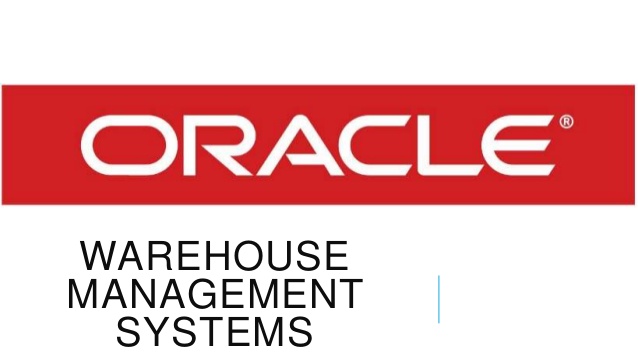
Oracle Warehouse Management Cloud offers a comprehensive and flexible solution for optimizing warehouse operations. Part of the Oracle Cloud suite, this system leverages advanced technologies to enhance inventory visibility, streamline workflows, and improve overall supply chain efficiency.
This warehouse management system employs machine learning and AI-driven analytics to optimize inventory placement, ensuring that items are strategically positioned for efficient picking and replenishment. It supports various fulfillment strategies, such as cross-docking and wave picking, while also enabling real-time monitoring of stock levels.
Oracle Warehouse Management Cloud seamlessly integrates with other Oracle Cloud applications, facilitating end-to-end business processes. This integration extends to transportation management, order management, and even external partners, creating a cohesive ecosystem for supply chain management.
The system’s user-friendly interface empowers warehouse personnel with intuitive tools for tasks like order allocation, batch processing, and quality control. Additionally, it supports mobile devices, enabling workers to access critical information and update inventory data on the go.
3. SAP EWM
SAP Extended Warehouse Management (EWM) is a powerful solution designed to optimize warehouse processes within the SAP ecosystem. It provides advanced tools for managing high-volume, complex warehouse operations, from inbound and outbound logistics to inventory tracking and distribution.
SAP EWM offers robust features like labor management, slotting optimization, and yard management. These capabilities help businesses streamline workflows, reduce labor costs, and maximize space utilization. The system’s real-time analytics provide insights into key performance indicators, empowering decision-makers to fine-tune strategies for improved efficiency.
One of the standout features of SAP EWM is its integration with other SAP solutions, such as SAP ERP and SAP Transportation Management (TM). This tight integration ensures seamless data flow and synchronization across various business functions, facilitating accurate demand forecasting and inventory planning.
Furthermore, SAP EWM supports automation and advanced technologies like RFID and voice picking, further enhancing operational efficiency. It also caters to specific industry requirements, making it suitable for a wide range of businesses, from manufacturing to distribution.
4. Manhattan Associates WMS

Manhattan Associates WMS (Warehouse Management System) stands as a premier solution in the realm of warehouse operations optimization. Renowned for its comprehensive features and cutting-edge technology, Manhattan Associates WMS empowers businesses to streamline their supply chain and enhance overall efficiency.
With Manhattan Associates WMS, organizations gain the capability to efficiently manage and coordinate warehouse activities. This includes inventory tracking, order fulfillment, labor management, and real-time visibility into operations. Its user-friendly interface and robust reporting tools facilitate data-driven decision-making, leading to improved resource allocation and reduced operational costs.
One of the key strengths of Manhattan Associates WMS lies in its scalability. It caters to businesses of all sizes, from small enterprises to large corporations, ensuring a tailored fit to individual operational needs. The system’s advanced algorithms optimize inventory placement, reducing unnecessary travel and maximizing space utilization.
Moreover, Manhattan Associates WMS seamlessly integrates with various technologies, such as RFID and IoT devices, enhancing automation and minimizing manual intervention. This integration bolsters accuracy, accelerates order processing, and reduces errors.
In summary, Manhattan Associates WMS emerges as an industry leader by offering a comprehensive and scalable solution for effective warehouse management. Its technological prowess, coupled with its ability to adapt to varying business needs, establishes it as a top choice for companies seeking to optimize their supply chain and elevate their warehouse operations.
5. Infor WMS

Infor WMS (Warehouse Management System) emerges as a robust and versatile solution for businesses aiming to orchestrate their warehouse operations with precision. Boasting a range of powerful features, Infor WMS facilitates seamless order fulfillment, inventory control, and operational efficiency.
One of the standout features of Infor WMS is its advanced analytics and reporting capabilities. This enables businesses to gain deep insights into their warehouse performance, uncover trends, and make informed decisions. By optimizing resource allocation and inventory management, Infor WMS helps reduce costs and improve overall operational effectiveness.
Infor WMS places a strong emphasis on automation and integration. It seamlessly integrates with various technologies such as barcode scanners, RFID, and automated material handling systems. This integration enhances accuracy, minimizes human error, and accelerates order processing.
Scalability is another hallmark of Infor WMS. It caters to businesses of all sizes, from small warehouses to large distribution centers. Its modular design allows organizations to tailor the system to their specific needs, ensuring a customized and efficient warehouse management solution.
The user-friendly interface of Infor WMS makes it easy for warehouse staff to learn and navigate the system, reducing training time and increasing user adoption. Additionally, its real-time tracking and visibility capabilities enable organizations to monitor inventory movement and order status in real-time, enhancing customer satisfaction.
In conclusion, Infor WMS stands as a comprehensive and adaptable warehouse management solution. Its focus on analytics, automation, and scalability makes it a valuable asset for businesses seeking to optimize their warehouse operations and enhance their supply chain management.
6. HighJump WMS
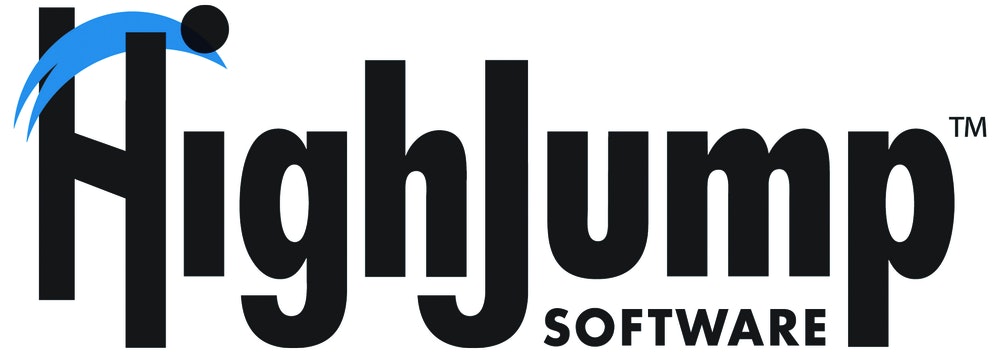
HighJump WMS (Warehouse Management System) is a dynamic and agile solution designed to revolutionize warehouse operations. Renowned for its flexibility and innovation, HighJump WMS empowers businesses to achieve optimal efficiency, accuracy, and customer satisfaction.
At the heart of HighJump WMS is its commitment to adaptability. The system is highly customizable, allowing organizations to tailor it to their specific workflow and operational needs. This ensures seamless integration with existing processes and systems, reducing disruption and maximizing productivity.
One of the standout features of HighJump WMS is its robust inventory management capabilities. It provides real-time visibility into inventory levels, locations, and movement, enabling businesses to make informed decisions and prevent stockouts. This real-time tracking enhances order accuracy and fulfillment speed.
HighJump WMS places a strong emphasis on collaboration and communication. It enables efficient coordination between different departments, optimizing tasks such as picking, packing, and shipping. Its user-friendly interface facilitates quick onboarding and reduces the learning curve for warehouse staff.
Furthermore, HighJump WMS leverages advanced technologies such as AI and machine learning to enhance forecasting accuracy and demand planning. This ensures that inventory levels are optimized, reducing excess stock and minimizing holding costs.
The system’s mobility features allow warehouse staff to access crucial information on handheld devices, increasing flexibility and responsiveness. HighJump WMS also integrates with IoT devices and automation technologies, enabling organizations to achieve higher levels of efficiency and accuracy.
In summary, HighJump WMS distinguishes itself through its adaptability, real-time visibility, and emphasis on collaboration. Its innovative approach to warehouse management equips businesses with the tools needed to optimize operations, increase customer satisfaction, and thrive in the competitive market.
7. Tecsys WMS
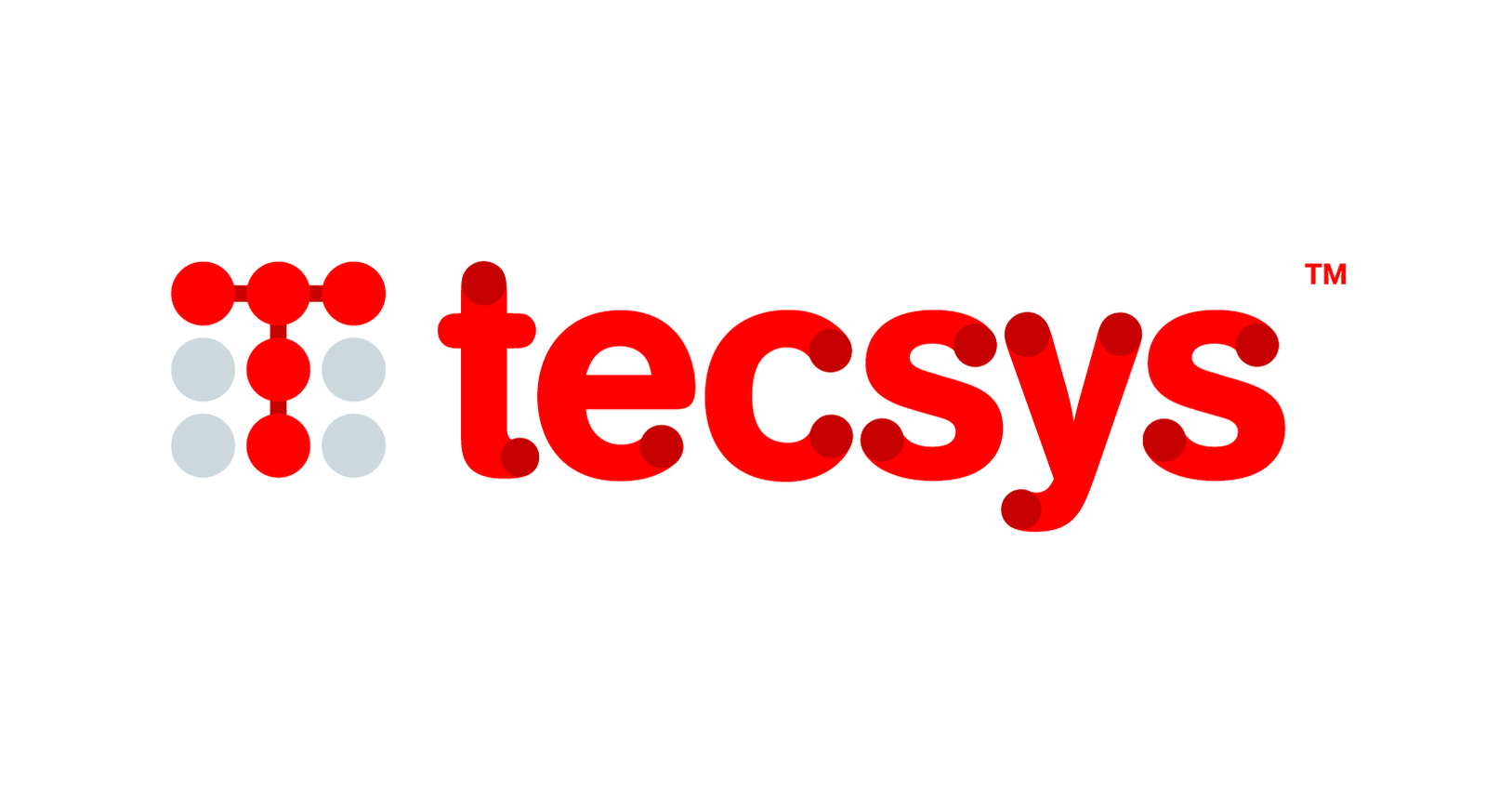 Tecsys Warehouse Management System (WMS) stands as a cutting-edge solution designed to revolutionize warehouse operations. With a relentless focus on efficiency and precision, Tecsys WMS empowers businesses to orchestrate their supply chain with finesse.
Tecsys Warehouse Management System (WMS) stands as a cutting-edge solution designed to revolutionize warehouse operations. With a relentless focus on efficiency and precision, Tecsys WMS empowers businesses to orchestrate their supply chain with finesse.
Tecsys WMS offers a comprehensive suite of features tailored to modern warehousing needs. From inventory tracking and order processing to optimizing storage utilization, the system’s intuitive interface ensures seamless execution of tasks. Real-time visibility into stock levels, order statuses, and shipment tracking minimizes delays and enhances customer satisfaction.
One standout feature of Tecsys WMS is its advanced analytics and reporting capabilities. By crunching data on key performance indicators, businesses can make informed decisions to fine-tune their operations. The system’s ability to forecast demand patterns enables proactive inventory management, reducing excess stock and preventing stockouts.
Furthermore, Tecsys WMS boasts integration prowess, seamlessly connecting with various e-commerce platforms and enterprise resource planning (ERP) systems. This integration facilitates automated order fulfillment, minimizing manual intervention and errors. The system’s scalability ensures it can cater to businesses of diverse sizes, from small enterprises to large corporations.
In a rapidly evolving digital landscape, Tecsys WMS ensures compliance with industry standards and regulatory requirements. Its robust security features safeguard sensitive data and transactions, building trust with both customers and partners.
In essence, Tecsys WMS emerges as a powerhouse in the realm of warehouse management. Its blend of innovation, analytics, and integration makes it an indispensable tool for businesses striving to optimize their supply chain and elevate their operational efficiency.
8. Sage WMS

Sage Warehouse Management System (WMS) stands as a beacon of intelligent warehouse management, equipped to navigate the intricacies of modern logistics with finesse. Seamlessly merging technology and operational insights, Sage WMS empowers businesses to amplify their warehouse efficiency.
At its core, Sage WMS is a dynamic solution for optimizing inventory and order management. It offers a user-friendly interface that provides real-time visibility into stock levels, order statuses, and shipment tracking. This visibility not only expedites order fulfillment but also enhances customer satisfaction through accurate delivery timelines.
One of Sage WMS’s notable features is its intelligent task allocation. By analyzing order characteristics, such as size, priority, and location, the system dynamically allocates tasks to the most suitable personnel or automated machinery. This ensures a streamlined workflow, minimizes bottlenecks, and maximizes resource utilization.
Sage WMS also excels in demand forecasting and inventory optimization. By crunching historical and real-time data, businesses can predict demand trends, enabling proactive stock management. This capability mitigates the risks of overstocking or stockouts, ultimately leading to cost savings and operational resilience.
The system’s seamless integration with other business systems, such as enterprise resource planning (ERP) and customer relationship management (CRM), enhances end-to-end processes. Automated data exchange between these systems reduces manual data entry, minimizes errors, and accelerates decision-making.
In the era of data-driven decision-making, Sage WMS stands as a testament to innovation. Its robust reporting and analytics capabilities enable businesses to extract actionable insights from their operations. With customizable dashboards and key performance indicators, stakeholders can monitor operational efficiency and make informed strategic choices.
In summation, Sage WMS emerges as a pivotal tool for modern warehouse management. Its blend of intelligent automation, demand forecasting, and integration capabilities positions it as a cornerstone for businesses seeking to thrive in the complex landscape of supply chain management.
9. Blue Yonder Luminate

Blue Yonder Luminate redefines Warehouse Management Systems by harnessing the power of Artificial Intelligence (AI) and machine learning. This cutting-edge solution offers predictive and prescriptive insights, transforming warehouses into proactive hubs of efficiency.
Blue Yonder Luminate’s AI-driven demand forecasting optimizes inventory levels, preventing stockouts and reducing excess inventory. By analyzing historical data and real-time trends, it enhances inventory replenishment strategies. The system’s autonomous decision-making capabilities facilitate dynamic order prioritization, ensuring swift and accurate order fulfillment.
With its AI-powered algorithms, Blue Yonder Luminate enhances route optimization, leading to efficient pick, pack, and ship processes. Its visual analytics tools provide customizable dashboards, enabling users to monitor key metrics and trends effortlessly. The system’s adaptability and scalability empower businesses to respond swiftly to market changes.
10. RF-SMART WMS
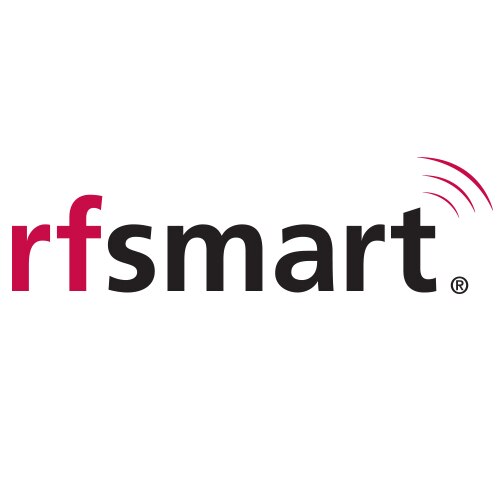
In the realm of Warehouse Management Systems (WMS), RF-SMART stands as a remarkable solution that revolutionizes the way modern warehouses operate. With a relentless focus on enhancing efficiency and accuracy, RF-SMART WMS has become a driving force in optimizing warehouse processes.
RF-SMART WMS offers a sophisticated platform that streamlines warehouse operations, enabling businesses to achieve higher levels of productivity. Through real-time data capture and seamless integration, RF-SMART empowers warehouse managers to make informed decisions promptly. From inventory management to order fulfillment, this system provides a holistic approach, ensuring every step of the supply chain is finely tuned.
One of RF-SMART’s standout features is its real-time inventory management capabilities. Traditional manual tracking methods are prone to errors and inefficiencies. RF-SMART’s barcode scanning technology ensures accurate stock counts and precise location tracking. This real-time visibility into inventory levels minimizes stockouts, reduces excess stock, and ultimately leads to significant cost savings.
RF-SMART WMS takes order fulfillment to a new level of precision. Manual picking processes are replaced with optimized workflows guided by the system’s intelligent algorithms. Pickers equipped with RF-SMART-enabled devices receive real-time picking instructions, reducing picking errors and boosting overall operational speed.
In the age of data, RF-SMART WMS leverages analytics to provide actionable insights. Warehouse managers can access key performance indicators, track order cycle times, and identify bottlenecks. This data-driven approach empowers continuous improvement, ensuring that warehouse processes are constantly refined for optimal results.
RF-SMART understands the importance of a seamless IT landscape. The system seamlessly integrates with existing enterprise resource planning (ERP) systems, ensuring a cohesive flow of data between departments. This integration eliminates data silos and enhances collaboration across the organization.
Modern warehouses require flexibility, and RF-SMART embraces this through mobile empowerment. Warehouse staff armed with RF-SMART-enabled mobile devices gain the ability to perform tasks on the go. This mobility enhances responsiveness, reduces manual paperwork, and contributes to a more agile warehouse ecosystem.
In conclusion, RF-SMART Warehouse Management System represents a pinnacle of efficiency and accuracy in the realm of warehouse operations. By embracing real-time data capture, streamlined processes, and intelligent insights, RF-SMART empowers businesses to optimize their supply chain, reduce costs, and elevate customer satisfaction. In a competitive market where efficient operations make all the difference, RF-SMART WMS stands as a true game-changer for modern warehouses.

